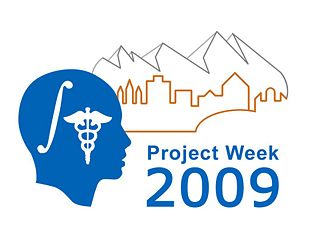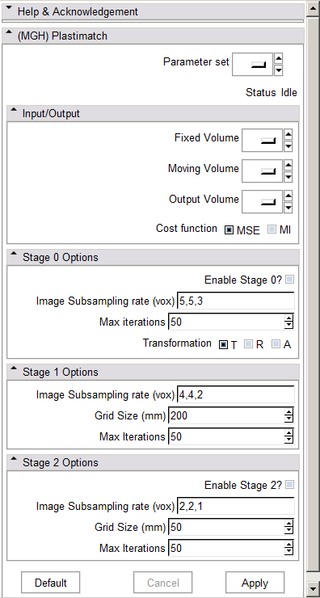Difference between revisions of "MGH RadOnc Winter 2009"
From NAMIC Wiki
m (MGH Radiation Oncology moved to MGH RadOnc Winter 2009: Uniform naming of project pages) |
|||
| (3 intermediate revisions by the same user not shown) | |||
| Line 1: | Line 1: | ||
{| | {| | ||
|[[Image:NAMIC-SLC.jpg|thumb|320px|Return to [[2009_Winter_Project_Week|Project Week Main Page]] ]] | |[[Image:NAMIC-SLC.jpg|thumb|320px|Return to [[2009_Winter_Project_Week|Project Week Main Page]] ]] | ||
| − | | | + | |[[Image:plastimatch-plugin-20090108.jpg|thumb|320px|Updated GUI for plastimatch plugin]] |
| | | | ||
|} | |} | ||
| Line 27: | Line 27: | ||
<h1>Approach, Plan</h1> | <h1>Approach, Plan</h1> | ||
| − | + | The goal was to enhance the interoperation of Slicer with MGH | |
| − | + | deformable registration software (plastimatch). | |
| − | |||
</div> | </div> | ||
| Line 35: | Line 34: | ||
<h1>Progress</h1> | <h1>Progress</h1> | ||
| − | + | <ul> | |
| − | + | <li>Add hooks to plastimatch so it can be downloaded and compiled | |
| + | as Slicer module from remote repository. | ||
| + | </li> | ||
| + | <li>Enhance the plugin GUI to give simplified access to multistage registration. | ||
| + | </li> | ||
| + | <li>Fix various bugs in the plastimatch front end. | ||
| + | </li> | ||
| + | </ul> | ||
</div> | </div> | ||
| Line 45: | Line 51: | ||
===References=== | ===References=== | ||
| − | |||
| − | |||
| − | |||
Latest revision as of 18:30, 29 January 2009
Home < MGH RadOnc Winter 2009 Return to Project Week Main Page |
Key Investigators
- MGH: Greg Sharp
- NAMIC: Wendy Plesniak, Steve Pieper
Objective
Design tools in Slicer to facilitate radiation treatment planning.
Approach, Plan
The goal was to enhance the interoperation of Slicer with MGH deformable registration software (plastimatch).
Progress
- Add hooks to plastimatch so it can be downloaded and compiled as Slicer module from remote repository.
- Enhance the plugin GUI to give simplified access to multistage registration.
- Fix various bugs in the plastimatch front end.
